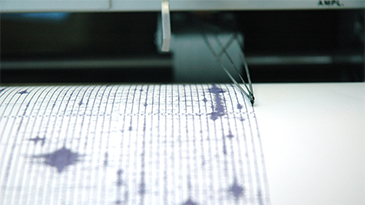Chemical manufacturers are becoming increasingly aware of an opportunity to simultaneously improve cash flow, customer service and topline revenue: manufacturing schedule optimization. It is a powerful “force multiplier” that allows manufacturers to accomplish greater financial and operational results than without it, which may prove especially valuable in facing current supply chain challenges.
Most manufacturers shockingly still use low fidelity spreadsheet tools for scheduling. Detailed schedule optimization is concerned with the best execution of tasks in an appropriate sequence and time, using viable (and perhaps constrained) resources. The business value opportunity here is multi-dimensional and measurable:
- improve working capital by lowering inventories
- improve customer service via better on-time in-full (OTIF) shipping performance and decrease expediting costs
- increase revenues via higher production output (products that you could sell more of if you had more available) from production facilities
I spoke to a company that manufactures disinfecting and cleaning products. In the current environment, demand far exceeds companies’ ability to supply. The company was eager to learn more about the Aspen Plant Scheduler and Aspen Schedule Explorer solutions and how they could help to increase production output at some of their facilities while simultaneously ensuring on-going alignment across their supply chain and operations execution teams.
You may be asking yourself: “How can better scheduling lead to increases in production output?”
The “Hidden Factory” inside the factory
In most process manufacturing plants, output is limited by the manufacturing equipment rather than labor. Since equipment tends to be the source of bottlenecks, production output cannot be increased by simply adding more operations personnel or an extra shift (most process manufacturing plants run 24x7 operations). Some process manufacturing plants are even more challenging as the manufacturing equipment bottlenecks can move or shift during the day depending on the mix of products being made. The solution to dealing with these bottlenecks is improved scheduling.
Let me clarify things further with an example. In many instances, a manufacturing process requires setting up or cleaning out equipment between operations to prevent cross-contamination. These setup or cleanout times are often sequence dependent, so therein lies the opportunity. For example, it takes one hour to clean out a piece of equipment when shifting from making material A to material B. However, cleaning out the same piece of equipment takes three hours when shifting from making material B to material A. Solving this schedule sequencing problem becomes even more difficult when you factor in hundreds to thousands of material combinations, the actual timing of demands and changing product mix. Produce material too early and it needs to be inventoried and ties up working capital. Produce material too late and that means a late shipment or worse yet, a lost customer order.
Schedule optimization results in equipment being available for more use by decreasing the overall time spent in changeovers, cleanout and/or transitions. I’ve heard many customers refer to schedule optimization as enabling them to access the “hidden factory” inside of their factories.
Most manufacturers still use inadequate scheduling tools
The manufacturer I spoke with indicated that the scheduling tool provided with their ERP system is not meeting the needs of their schedulers and material managers for numerous reasons. All the scheduling is manual and time intensive. The company can’t incorporate even basic business rules to help automate certain tasks. Optimization capabilities are not available. The numerous back-and-forth conversations for clarification or special instructions related to scheduled activities are scattered across hand-written paper notes and emails buried deep in overflowing inboxes. Worse yet, their ERP scheduling tool is a live version, which means the schedulers can't explore different scenarios. While they have a test environment available, there are no live process orders in that system; its usefulness is thus limited to testing master data changes in the ERP system.
With the ability to rapidly change a schedule to assess different options, schedulers can react more quickly and adjust their schedules to keep production aligned to the plan and meet customer and internal stakeholder commitments. An advanced scheduling solution helps to answer critical questions such as:
- Is there enough inventory to satisfy demands (customer orders, stock-transfer orders) and forecasts?
- Is there too much inventory of some materials?
- What is the severity of inventory issues in the short-term and mid-term?
- What are the consequences of schedule changes? Does it cause issues somewhere else?
- What is the impact to inventory positions if certain forecasted demands don’t materialize?
Finally, an advanced scheduling solution decreases manufacturing risk by allowing teams to visualize the most recent version of the schedule, identify issues in advance, collaborate to resolve those issues, and maintain ongoing situational awareness about what is happening on the shop floor in order to keep team members working towards a common goal. This gives manufacturers the confidence to remove inventory buffers without increasing risk and dramatically decreases instances of misunderstandings in communications that result in costly mistakes.
Learn more in the white paper “Alignment Between Supply Chain and Operations Execution: The Formula for Higher Profits in Chemicals.”






Leave A Comment